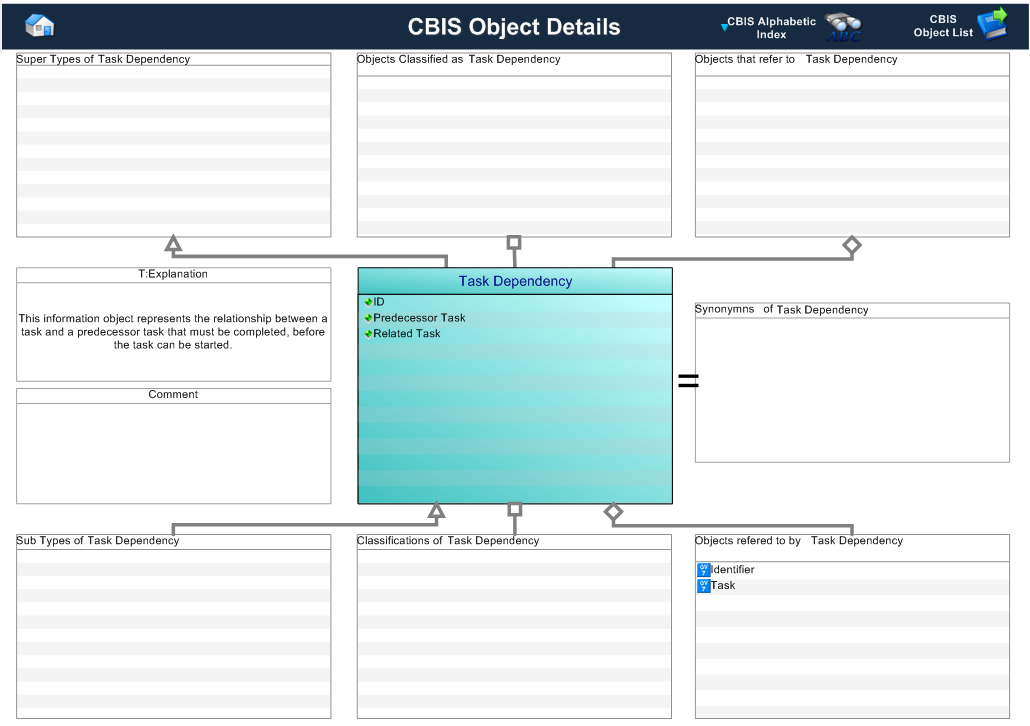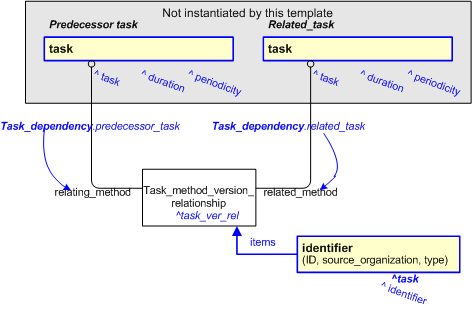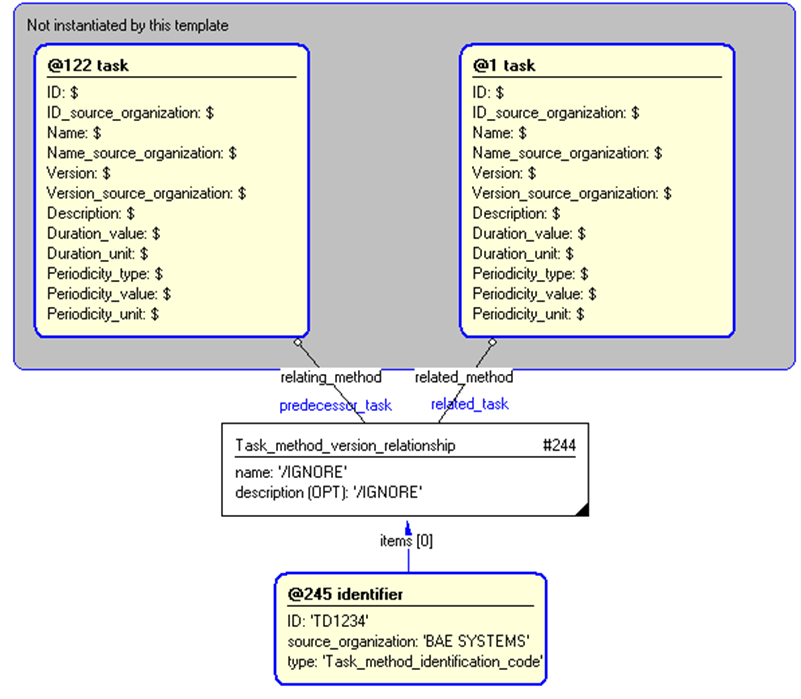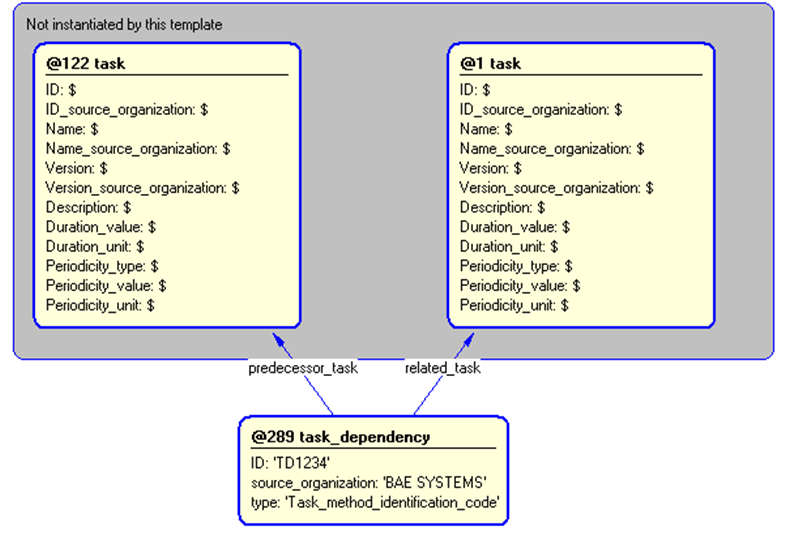Template:— task_dependency (tsk_depd)
Context:— UK_Defence |
Date: 2009/04/17 12:22:13
Revision: 1.2
|
This section specifies the template task_dependency.
NOTE
The template has been defined in the context of
UK_Defence.
Refer to the business context for details of related templates.
NOTE
An explanation of a template and the associated instantiation path is
provided in the
Template overview
section.
This template describes how to represent a UK_Defence Task Dependency using
Task_method_version_relationship.
This represents the relationship between a task and a predecessor task that must be completed, before the task can
be started
The Task dependency business object is used by those UK_Defence Data Exchange
Specifications that require information about task dependency.
Figure 1 — Graphical Representation for Business Object Task Dependency
Task Dependency:
This template encompasses the requirements of a UK_Defence Task Dependency.
The definition of a UK_Defence Task Dependency object is:
This information object represent the relationship between a task and a predecessor task that must be completed, before
the task can be started.
The record consists of the attributes for a task dependency; listed below.
|
Attribute name
|
Attribute description
|
Attribute type
|
Optionality
|
| ID |
This is the identifier of the task dependency |
Identifier |
Mandatory |
| Predecessor Task |
This is the reference to the task which needs to be completed before the related task can start. |
Task |
Mandatory |
| Related Task |
This is the reference to the task that is dependent on the predecessor task having been completed before it can start. |
Task |
Mandatory |
Table 1 — Task Dependency attribute details
The EXPRESS-G diagram in
Figure
2
shows the templates and EXPRESS entities that are required
to represent the template
"task_dependency".
The text highlighted in blue shows the template parameters.
Figure 2 — An EXPRESS-G representation of the Information model for task_dependency
The graphic for the template to be used in other EXPRESS-G diagrams
is shown in Figure
3
below.
Figure 3 — The graphical representation of the task_dependency template
The following input parameters are defined for this template:
Current identifier of the task dependency.
The organization or information system that created the associated task dependency identifier. Alternatively
this could be set to /NULL and when Person or Information System is the source; see Identifier template characterizations
This is the name of the type of the class used to classify the task dependency identifier and so
provide the role or reason for the identification.
The following classes and their sub-classes can be used:
Identifies the task which needs to be completed before the related task can start.
Identifies the task that is dependent on the predecessor task having been completed before it can start.
The following reference parameters are defined for this template:
%^target = $task_dependency.task%
The following parameter combinations specify a uniqueness constraint:
Unique constraint: Unique task dependency
Each instance of the
entity
(
Identification_assignment)
within the data set shall be uniquely identified
by a combination of the following parameters on this
template (task_dependency) namely:
ID,
predecessor_task,
related_task.
The
instance is
referenced by the following template parameter:
task.
The instantiation path shown below specifies the entities that are to be
instantiated by the template.
A description of templates and the syntax for the instantiation path is
provided in the
Templates Help/Information section.
The following entities are instantiated with attributes as specified:
The instance diagram in Figure
4
shows an example of the EXPRESS entities and templates that are instantiated by the template:
/task_dependency(predecessor_task='@122', related_task='@1', id='TD1234', source_organization='BAE Systems', type='Task_method_identification_code')/
(an illustration of the consolidated task_dependency template is shown in
Figure
5 below.)
Figure 4 — Entities instantiated by task_dependency template
The instance diagram in
Figure
5
shows the graphic symbol for the template that is to be
used in other instance diagrams. The example template is:
/task_dependency(predecessor_task='@122', related_task='@1', id='TD1234', source_organization='BAE Systems', type='Task_method_identification_code')/
Figure 5 — Instantiation of task_dependency template
Characterizations
No common characterizations of the template
task_dependency
have been identified. However, the ISO 10303-239 EXPRESS model
may enable other assignments to the entities instantiated by the template.




